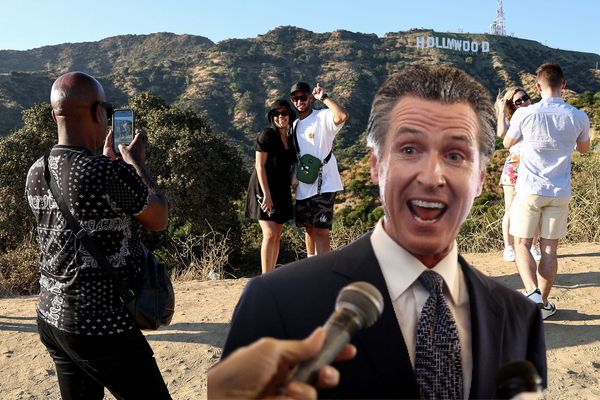Dune is one of the most revered works in science fiction, due to the scale and granular detail (no pun intended) of Frank Herbert’s world-building. The original novel comes with multiple appendices covering millennia of historical context. This means that the biggest hurdle any adaptation or spin-off must overcome is fidelity to the world Herbert envisioned.
Dune: Prophecy is not going to please everyone. To start with, the series is set shortly after the events of the Schools of Dune trilogy (Sisterhood of Dune (2012), Mentats of Dune (2014) and Navigators of Dune (2016)) by Herbert’s son Brian and Kevin J. Anderson. The pair’s continuation of the novel series has been met with criticism from certain quarters of the Dune fandom.
Barring occasional flashbacks, Dune: Prophecy is set 10,148 years before the birth of Paul Atreides. This is a pivotal moment in the empire’s history, when the institutions of the original novel are struggling to find their feet and are riven with internal squabbles. Unlike the over-determined universe of the future, Prophecy shows us a world where there is still room to breathe – to the best of my recollection, this is the first Dune property where people are seen hanging out in a nightclub.

Looking for something good? Cut through the noise with a carefully curated selection of the latest releases, live events and exhibitions, straight to your inbox every fortnight, on Fridays. Sign up here.
The anti-heroes of Prophecy are the sisters Valya and Tula Harkonnen (Emily Watson and Olivia Williams, with Jessica Barden and Emma Canning in flashback scenes). They are distant ancestors of the villain of Dune, Baron Vladimir Harkonnen. The sister’s noble house has fallen from grace due to the alleged treachery of their forebear, Abulurd. It follows them as they shape a nascent Sisterhood into what will eventually become the manipulative Bene Gesserit order, controlling events from the shadows.
Elsewhere, rebels plot to overthrow the empire, a battle-scarred mystic (Travis Fimmel) inveigles his way into the emperor’s trust, and a baleful entity invades the dreams of those attuned to it. Alliances are formed and broken, assassinations and murders abound, and ghosts and demons lurk in the subconscious. I, for one, am hooked.
All the less wholesome Herbertian components are present too: “genetic memory”, eugenics and portentous utterances that sometimes overwhelm any political critique. However, in this series, the empire has not yet adjusted to the ban on artificial intelligence.
In the original novel and the films, this ban resulted in the creation of humans genetically engineered to perform complex calculations in place of computers. Bar the brief appearance of a character with a suggestive tattoo in one episode, it seems that these “mentats” are not an established feature of the period. “Thinking machines” are still available if one knows where to look for them, a key point that drives much of the plot.
One notable thing about this series is the near total absence of Arrakis, the harsh desert planet that is politically and economically the most important place in the empire. Other adaptations’ overwhelming focus on this planet often gives the impression of an oddly barren universe.
In Prophecy, however, we get to see the furry whales whose pelts are the stock-in-trade of the Harkonnen family. We witness a Salusan bull hunt and are shown a wide array of geographical settings, from snowy tundras and freezing seas to coniferous forests, rain-lashed cities and the sun-kissed coast of the imperial capital. The desert world, whose nickname gives the entire franchise its identity, is, thus far, conspicuous by its absence, except for nightmarish visions of sandworm maws.
Other absences are also noticeable. The conflict against thinking machines is referred to as the “Butlerian Jihad” in the novels, named after the group who led the revolt. In Prophecy, this period is termed “the great machine wars”. The explanation could be that at this point, the “Butlerians” are a fundamentalist sect who have not yet become a significant cultural force. However, the change of terminology here does underline the scarcity of the Middle Eastern and north African cultural references that are considered emblematic of the original novels.
Another departure lies in Valya’s use of “the voice”, which compels obedience from others. In the novels, Valya learns this technique from the Sisterhood’s founder. However, Prophecy positions Valya as the first human to possess this ability, which is described as a random mutation produced by evolution. The Dune purist might balk at this alteration, but it is in keeping with Valya’s character that her sense of entitlement comes with the ability to shout other people into submission.
Is Dune: Prophecy “perfectly” faithful to Herbert’s vision? Maybe not, but none of the liberties it takes are egregious. If, like me, you enjoy your sci-fi with scheming, politicking and moments of horror mixed in, Prophecy is well worth a view.
Jack Fennell does not work for, consult, own shares in or receive funding from any company or organisation that would benefit from this article, and has disclosed no relevant affiliations beyond their academic appointment.
This article was originally published on The Conversation. Read the original article.







